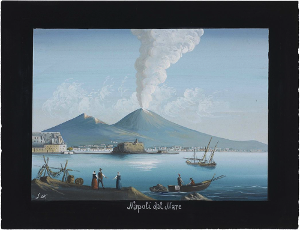Speaker
Dr
Dariusz Gora
(Institute of Nuclear Physics Polish Academy of Sciences, PL-31342 Krakow, Poland)
Description
The MAGIC telescopes, located at the Roque de los Muchachos
Observatory (2200 a.s.l.) in the Canary Island of La Palma,
are placed on the top of a mountain, from where a window of visibility of
about $5^{\circ}$ in zenith and $80^{\circ}$ in azimuth is open in the
direction of the surrounding ocean. This allows to search for a signature
of particle showers induced by earth-skimming cosmic tau neutrinos in the
PeV to EeV energy range arising from the ocean.
We have studied the response of MAGIC to such events, employing Monte Carlo
simulations of upward-going tau neutrino showers. The analysis of the shower
images shows that air showers induced by tau neutrinos can be discriminated
from the background of very inclined hadronic showers. We have calculated
the point source acceptance and the expected event rates, assuming an
incoming tau neutrino flux consistent with IceCube measurements, and for a
sample of generic neutrino fluxes from photo-hadronic interactions in AGNs.
The analysis of 30 hours of MAGIC data taken towards the sea leads
to a sensitivity to tau neutrinos of the same order of the down-going
point source study of the Pierre Auger Observatory, but is less sensitive
than the diffuse study of the IceCube Experiment.
Author
Dr
Dariusz Gora
(Institute of Nuclear Physics Polish Academy of Sciences, PL-31342 Krakow, Poland)
Co-authors
Dorota Sobczynska
(University of Lodz, PL-90236 Lodz, Poland)
Prof.
Elisa Bernardini
(Humboldt University of Berlin, Institut fuer Physik Newtonstr. 15, 12489 Berlin Germany/Deutsches Elektronen-Synchrotron (DESY), D-15738 Zeuthen, Germany)
Javier Rico
(Institut de Fisica d'Altes Energies (IFAE), The Barcelona Institute of Science and Technology, Campus UAB, 08193 Bellaterra (Barcelona), Spain)
Dr
Marina Manganaro
(IAC and ULL Tenerife)
Martin Will
(Inst. de Astrofisica de Canarias, E-38200 La Laguna, Tenerife, SpainUniversidad de La Laguna, Dpto. Astrof'isica, E-38206 La Laguna, Tenerife, Spain)
Michele Doro
(Universita di Padova and INFN, I-35131 Padova, Italy)
Saverio Lombardi
(INAF National Institute for Astrophysics, I-00136 Rome,Italy)

